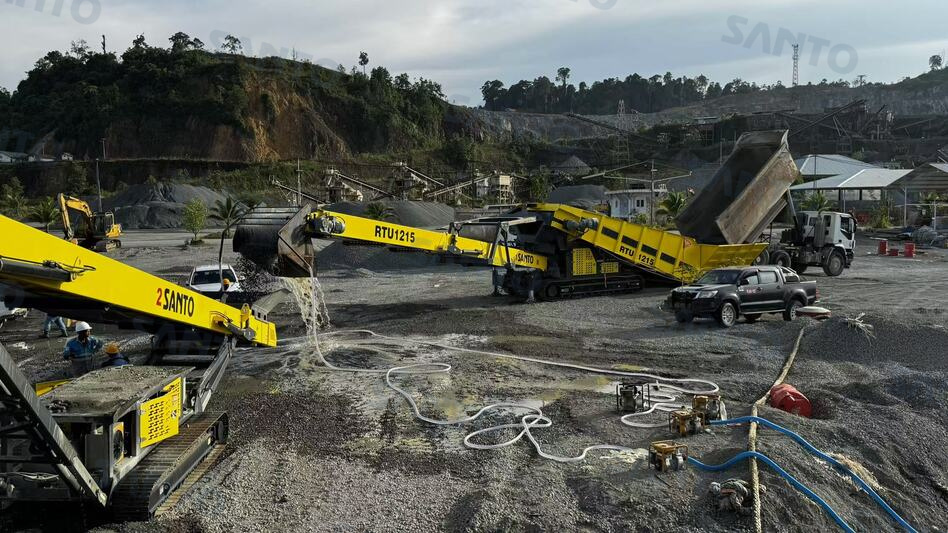Mobile conveyors are versatile material handling systems used for transporting bulk materials or goods over varying distances. They are commonly used in industries such as mining, construction, ports, and agriculture. There are several types of mobile conveyors, depending on the specific needs of the operation. Here are some of the key types:
Description: These conveyors are mounted on wheels or rubber tires, making them highly mobile and easy to move between different locations.
Applications: Used in construction sites, mining operations, and ports, where they need to be repositioned frequently.
Advantages:
Easy to relocate
Can be moved with a truck or tractor
Flexible for use in different environments
Description: Similar to crawler-mounted conveyors, tracked conveyors use tracks to provide stability and mobility across rugged surfaces.
Applications: Ideal for heavy-duty industries such as mining, forestry, or recycling.
Advantages:
Excellent for challenging environments
Provides enhanced load-carrying capabilities
Suitable for large volumes of materials
Description: These conveyors can extend and retract to adjust the length depending on the need. They are often used for loading/unloading bulk materials from trucks or ships.
Applications: Common in bulk handling, such as in ports for loading/unloading cargo.
Advantages:
Adjustable length for different loading/unloading heights
Reduces the need for manual labor
Efficient in bulk handling tasks
Description: Radial mobile conveyors are designed to move materials in a circular or radial pattern, which allows them to stockpile materials efficiently.
Applications: Frequently used in aggregate, mining, and recycling operations to stockpile materials.
Advantages:
Ideal for stockpiling large quantities of materials
Can adjust the radial movement for maximum material coverage
Enhances material flow and reduces stockpiling time
Description: These conveyors are designed to stack materials, often in a specific location. They are usually mobile and can be adjusted in height.
Applications: Used in bulk handling, including mining and construction, for material stockpiling.
Advantages:
Allows for efficient stockpiling and material distribution
Adjustable height for different stacking needs
Can handle large amounts of material
Description: Swivel conveyors have the ability to rotate 360 degrees, which makes them ideal for flexible material movement across a wide area.
Applications: Used in material handling systems where flexibility is key, like in warehouses or distribution centers.
Advantages:
Can cover a wide area with minimal movement
Versatile and adaptable
Allows for continuous, efficient material flow
Description: These conveyors are often designed to transport materials inside containers or shipping units. They are compact and easy to transport.
Applications: Used in ports and distribution centers for loading/unloading containers.
Advantages:
Designed for containerized transport
Can easily be integrated with containerized loading systems
Portable and adaptable to various container sizes
Description: These conveyors are designed with an inclined angle to move materials up a slope. Often used in mining or construction for transporting materials over hilly terrain.
Applications: Commonly used to move materials from lower elevations to higher points.
Advantages:
Ideal for vertical transport
Can handle large loads over inclines
Description: These conveyors are mounted above the ground, often using rails or other structural supports, allowing for clear space underneath for other activities.
Applications: Used in warehouses, factories, and distribution centers.
Advantages:
Maximizes floor space
Can transport materials in tight or congested areas

Considerations for Choosing the Right Type:
Terrain: Consider whether the terrain is flat, rough, or hilly, and select a suitable type of mobile conveyor.
Load Capacity: Match the conveyor type to the weight and type of material you’re transporting.
Distance: Some mobile conveyors are better for short distances, while others are more suited for long-distance transport.
Portability: Choose between wheel-mounted, crawler-mounted, or tracked models depending on how often the conveyor needs to be relocated.
Each type of mobile conveyor has its own set of features and is best suited for specific tasks, so selecting the right one depends on factors like the material being transported, distance, terrain, and application requirements.
For more information about mobile conveyors, please click on our website: www.santomachinery.com